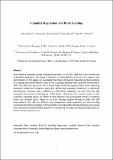Files in this item
Liquidity regulation and bank lending
Item metadata
| dc.contributor.author | Ananou, Foly | |
| dc.contributor.author | Chronopoulos, Dimitris K. | |
| dc.contributor.author | Wilson, John O. S. | |
| dc.contributor.author | Tarazi, Amine | |
| dc.date.accessioned | 2022-12-18T00:39:48Z | |
| dc.date.available | 2022-12-18T00:39:48Z | |
| dc.date.issued | 2021-08 | |
| dc.identifier | 274531651 | |
| dc.identifier | 6c7a45ff-016b-4881-acfa-e4120e2041b9 | |
| dc.identifier | 85108993744 | |
| dc.identifier | 000693225000022 | |
| dc.identifier.citation | Ananou , F , Chronopoulos , D K , Wilson , J O S & Tarazi , A 2021 , ' Liquidity regulation and bank lending ' , Journal of Corporate Finance , vol. 69 , 101997 . https://doi.org/10.1016/j.jcorpfin.2021.101997 | en |
| dc.identifier.issn | 0929-1199 | |
| dc.identifier.other | ORCID: /0000-0002-9554-9332/work/96140934 | |
| dc.identifier.other | ORCID: /0000-0002-2288-4842/work/96141265 | |
| dc.identifier.uri | https://hdl.handle.net/10023/26621 | |
| dc.description.abstract | Bank liquidity shortages during the global financial crisis of 2007-2009 led to the introduction of liquidity regulations, the impact of which has attracted the attention of academics and policymakers. In this paper, we investigate the impact of liquidity regulation on bank lending. As a setting, we use the Netherlands, where a Liquidity Balance Rule (LBR) was introduced in 2003. The LBR was imposed on Dutch banks only and did not apply to other banks operating elsewhere within the Eurozone. Using this differential regulatory treatment to overcome identification concerns and a difference-in-differences approach, we find that the LBR increased the volume of lending by Dutch banks relative to other banks located in the Eurozone. Increased equity, an inflow of retail deposits and subsequent increase in balance sheet size allowed Dutch banks to increase lending despite having to meet the LBR requirements. The LBR also affected loan composition (with corporate and retail lending increasing more than mortgage lending) and the maturity profile of loan portfolios. Our results have relevance for policymakers tasked with monitoring the impact of liquidity regulations on banks and the real economy. | |
| dc.format.extent | 1748471 | |
| dc.language.iso | eng | |
| dc.relation.ispartof | Journal of Corporate Finance | en |
| dc.subject | Bank lending | en |
| dc.subject | Basel III | en |
| dc.subject | Liquidity regulation | en |
| dc.subject | Liquidity balance rule | en |
| dc.subject | Liquidity coverage ratio | en |
| dc.subject | Propensity score matching | en |
| dc.subject | Quasi-natural experiment | en |
| dc.subject | HG Finance | en |
| dc.subject | 3rd-DAS | en |
| dc.subject.lcc | HG | en |
| dc.title | Liquidity regulation and bank lending | en |
| dc.type | Journal article | en |
| dc.contributor.institution | University of St Andrews. Centre for Responsible Banking and Finance | en |
| dc.contributor.institution | University of St Andrews. School of Management | en |
| dc.identifier.doi | https://doi.org/10.1016/j.jcorpfin.2021.101997 | |
| dc.description.status | Peer reviewed | en |
| dc.date.embargoedUntil | 2022-12-18 |
This item appears in the following Collection(s)
Items in the St Andrews Research Repository are protected by copyright, with all rights reserved, unless otherwise indicated.

